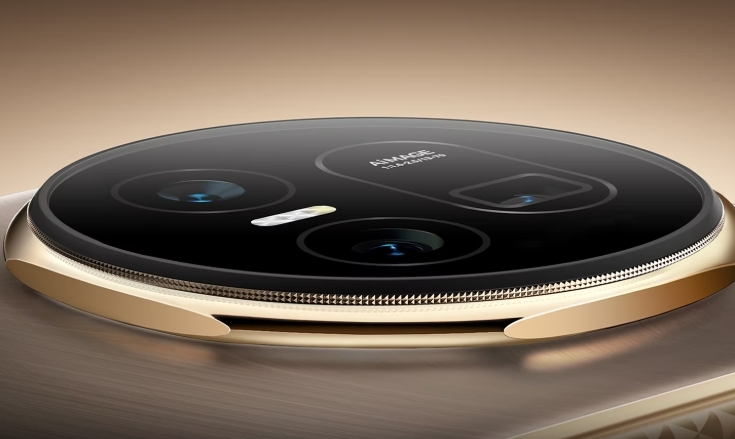Smartphone Camera Innovations Changing the Game
Smartphone cameras have advanced dramatically in recent years, changing the way people take, share, and consume photos. What was once considered a secondary function on mobile devices has become a primary selling element. Today's smartphones have strong cameras that can produce professional-quality photos and movies. With AI integration, multi-lens setups, and better low-light capabilities, these smartphones are crucial tools for photographers, influencers, and content makers, rather than just for casual pictures. This trend is influencing how we approach mobile photography and what we anticipate from smartphone cameras.

What Are the Most Noteworthy Smartphone Camera Features Today?
AI-Powered Photography and Smart Features
AI-powered photography is transforming the way smartphones take photographs. AI uses machine learning to automatically alter settings depending on scene identification, improving the overall outcome. AI Scene Detection and Smart HDR improve color balance, exposure, and sharpness in real time. This technology means that even inexperienced photographers may capture amazing images with minimal effort. AI allows cameras to detect different scenarios, such as landscapes or portraits, and apply the optimal settings to produce the highest quality. As AI advances, smartphone cameras will provide better, more intuitive photographic experiences.
Multi-Lens and Telephoto Zoom Systems
One of the most significant developments in smartphone camera technology is the multi-lens system. A variety of lenses, including ultra-wide, telephoto, and macro, may be found on smartphones, expanding the photography options available. Users are able to capture clear, detailed shots from a distance with telephoto zoom lenses. This enables photographers to capture faraway vistas with greater precision, a feature that was previously exclusive to high-end digital cameras. Users are able to explore various perspectives and compositions thanks to the versatility of multi-lens systems, which opens up new avenues for creative expression.

Night Mode and Low-Light Performance
Night mode has become a regular function on many smartphone cameras, making it an indispensable tool for shooting high-quality photographs in low-light situations. Night mode improves details, colors, and brightness without the need for a flash by combining many exposures and applying clever software algorithms. As a result, images taken in dimly lit environments seem sharper and more vivid, even in near-darkness. This technology is continually improving, with some smartphones, like HONOR, offering professional-level low-light performance. It's a game-changer for night photography and adds a new layer of versatility to smartphone cameras.
How Smartphone Cameras Are Revolutionizing Mobile Photography?
Professional-Grade Features in Your Pocket
The cameras in modern smartphones pack all the professional-grade functionality of larger DSLRs and mirrorless cameras into a surprisingly portable package. Manual settings, RAW picture compatibility, and powerful editing tools allow photographers to capture more accurate photos. On top of that, a lot of modern cellphones include video features like slow-motion recording and 4K resolution that are on par with those of traditional video cameras. Anyone may take photographs that seem like they were shot by a professional, thanks to these tools, which allow users to get excellent results without the need for bulky equipment.
Seamless Integration with Editing and Sharing Apps
Smartphone cameras function in tandem with editing and sharing applications, allowing users to fine-tune their photographs before instantaneously sharing them with the world. Apps like Adobe Lightroom, Snapseed, and VSCO work flawlessly with smartphone cameras, providing powerful editing options for color correction, filters, and retouching. After editing, users may quickly share their photographs on social media or cloud storage, speeding the creative process. This level of integration transforms smartphones into the ideal tool for photography and content sharing, guaranteeing that photographs are constantly available for public consumption with no effort.
Smartphone Cameras vs. Traditional Digital Cameras
Professional photographers continue to prefer classic digital cameras, although in recent years, smartphone cameras have greatly reduced the difference. Digital cameras cannot match the mobility and user-friendliness of smartphones, which provide unmatched convenience. Many users believe that smartphone cameras are enough for the majority of their photographic needs due to their growing capacity to shoot in high resolution, catch moving scenes, and even shoot in raw formats. However, in areas like optical zoom, sensor capacity, and customization, digital cameras continue to dominate. The distance between smartphones and conventional cameras is still closing in spite of these variations.
Conclusion
Innovations in smartphone cameras are changing how we take and view images and movies. Advances such as AI-powered photography, multi-lens systems, and enhanced low-light performance have made smartphones the preferred tool for photographers of all skill levels. Photography is now more accessible than ever thanks to these smartphones' professional-grade features, editing capabilities, and smooth sharing app integration. Smartphones are revolutionizing mobile photography by leading the way in terms of ease, portability, and general usefulness, even though conventional cameras still have certain advantages.
